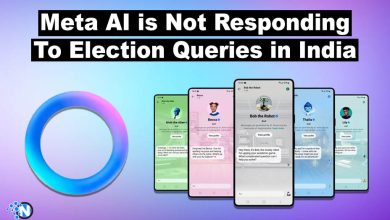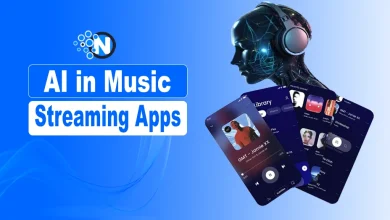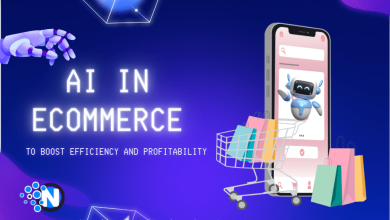Learning Communities and AI: Collaborative Education in the Digital Age

The conversation about AI in education often focuses on a single, incomplete vision: the AI tutor working one-on-one with an isolated learner. From AI tutors to Duolingo’s chatbots, the industry has largely adopted a “solitary genius” model. This model features a student, their personal AI, and the promise of customized learning.
However, this vision ignores a basic truth about how people learn. Knowledge is not just transmitted; it is co-created through dialogue, debate, and shared discovery. The best learning happens in communities where peers challenge ideas and mentors provide context. Collective intelligence arises from these individual contributions.
The real opportunity is not choosing between AI and communities, but intelligently combining them.
In this blog post, I will explain how combining learning communities and AI can deliver amazing collaborative learning outcomes.
The Symbiotic Loop: When AI Amplifies Community Intelligence
The future of digital learning is a symbiotic relationship. AI will enhance community dynamics, and communities will make AI more effective. This creates a powerful feedback loop. AI quality improves with community engagement, and the community’s value grows with the AI advanced tools like Khan Academy’s Khanmigo.
Think of a typical online study group. Discussions are often fragmented, context is lost, and valuable insights get buried. Now, imagine that same group assisted by an AI facilitator. This AI could keep discussions focused, bring up relevant past conversations, and ask probing questions to deepen understanding. The community would become more productive, and the AI would learn from every interaction.
This symbiosis creates something neither could achieve alone: a learning environment that blends the empathy of human connection with the scale of artificial intelligence.

AI as Super-Moderator: Orchestrating Real-Time Learning
In many collaborative learning spaces like Discord or Slack, valuable discussions can descend into chaos. AI can transform these spaces by acting as an intelligent moderator that enhances, rather than replaces, human interaction.
For example, consider a Photoshop learning community with an AI facilitator. When a beginner asks about layer masks, the AI does more than give a generic answer. It could connect them to a similar past discussion and notify experienced members with relevant expertise. If the conversation strays, the AI could gently redirect it with a relevant, thought-provoking question.
The AI becomes a “Socratic DJ,” mixing the right questions, resources, and people to maintain the flow of collective intelligence. It prevents discussions from getting stuck on basic facts and ensures deeper questions get the attention they need.
From Information Chaos to Collective Intelligence
Most learning communities possess a wealth of knowledge that is poorly organized and difficult to access. Forums accumulate thousands of threads, Discord servers overflow with conversations, and valuable insights get buried under the constant stream of new content.
Modern AI, using tools like vector databases and large language models, can act as an intelligent librarian for this collective knowledge. It doesn’t just store information; it understands context, synthesizes patterns, and connects different conversations.
This AI synthesizer can find the best answer to common problems by analyzing past discussions. It can create dynamic FAQs that evolve with the community and personalize the experience by connecting new questions to relevant past discussions. The result is a knowledge base that becomes more valuable and accessible as it grows.
The Data Flywheel: Building Unbeatable Business Moats
For entrepreneurs, the integration of community and AI is not just a pedagogical advantage; it’s an economic one. This model creates a powerful data flywheel that builds a sustainable competitive edge.
The process is simple. A sophisticated AI tutor attracts a community of learners. As this community engages, it generates a unique, proprietary dataset. This data, full of real-world problems and solutions, cannot be easily replicated.
This dataset then fuels continuous AI improvement. Unlike generic models, a community-powered AI develops deep, domain-specific expertise. An AI trained on a Photoshop community’s interactions will outperform a general model on specific Photoshop tasks. As the AI improves, it attracts more users, generating more data. This creates a defensible moat that strengthens over time.
Architectural Principles for Community-AI Integration
Building effective community-AI platforms requires three core principles.
- User Agency: Learners should control their starting point. They might need help with a specific After Effects technique, and the system should respect that immediate need without forcing a predetermined path.
- Proactive Guidance: The AI should do more than just answer questions. It should have a pedagogical mission, using Socratic dialogue to guide users toward proficiency, connect problems to broader concepts, and identify knowledge gaps.
- Persistent Memory: The AI must remember individual user histories and community patterns. It should know which explanations work best, which experts are most helpful on certain topics, and how concepts build on one another.
These principles work together to create learning environments that are personal, connected, structured, and flexible.
The Irreplaceable Human Element
While AI is transformative, it cannot replace the value of human connection. Communities provide empathy, mentorship, and a cultural context that AI cannot replicate. The shared struggle of mastering a complex skill creates bonds between learners.
The goal is not to replace these human elements but to amplify them. AI can identify when learners need encouragement, connect them with mentors, and highlight community achievements. It can handle routine tasks, creating more opportunities for meaningful human interaction.
Evidence from the Wild: Early Implementations
This community-AI model is not just a theory. Early versions are already showing its potential.
Stack Overflow uses AI to help users find relevant answers in its vast archive. Discord communities are using sophisticated bots to facilitate learning. GitHub Copilot is a form of community-AI collaboration, where code from millions of developers trains an AI that assists individual programmers. These examples show that AI systems become more valuable when integrated with real community interactions.
Redefining Success Metrics for Learning Communities
Traditional education technology metrics, such as completion rates, time spent, and user engagement, capture only superficial aspects of learning effectiveness. Community-AI learning platforms require new success indicators that reflect their deeper pedagogical goals.
Applied Proficiency measures whether learners can actually use their knowledge to solve real problems. In creative software education, this means tracking whether users can complete meaningful projects, not just tutorial exercises. Can they create professional-quality Photoshop compositions or edit compelling videos in Premiere Pro?
Community Contribution represents a vital transition from consumer to creator of knowledge. When learners begin answering questions for others, they demonstrate both mastery and engagement with the community’s collaborative learning culture. Platforms should track and reward this evolution from “learner” to “mentor.”
Reduced Time-to-Answer measures system efficiency: how quickly can the combined AI-community system help users overcome specific obstacles? This metric captures both AI responsiveness and community knowledge accessibility.
These metrics reflect the reality that successful learning is ultimately about capability transfer and community building, not content consumption.
The Trillion-Dollar Opportunity: Learning Ecosystems Over Tutoring Apps
The shift from isolated AI tutors to integrated community platforms is a fundamental reimagining of digital education. The opportunity is not to build another tutoring app, but to create a dominant learning ecosystem. This model moves from one-to-one tutoring to many-to-many learning networks that grow more valuable over time.
These platforms create economies of knowledge where learners become teachers and experts gain recognition. They are the next frontier of educational technology, moving from static content to dynamic ecosystems. This is the foundation for reshaping how people learn and share knowledge in a complex world.




